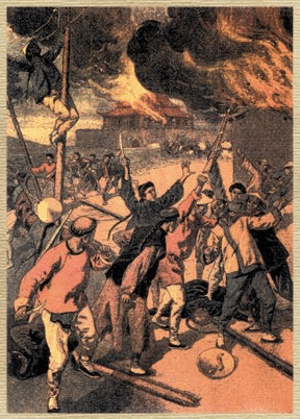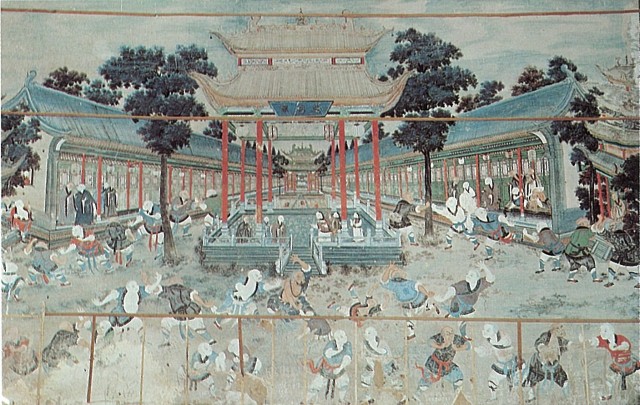
Shao-Lin History
Legend has it that it all began 1500 years ago in a small part of Honan province in China at a temple known as Shao-Lin Ssu, the Young Forest Temple... Nestled at the foot of Sung Shan (Sung Mountain), monks, plagued by bandits, began practicing additional techniques for self defense as well as continued health and longevity. Finding a focus in their martial training, these monks learned and grew, collecting and developing different forms and styles of fighting arts and, thus was born the legend of the Shao-Lin Fighting Monks.
It was in the sixth century that Ta Mo, known as Bodhidharma in India, crossed the Himalayas and taught the Shao-Lin monks the 49 postures of the I Chin Ching, the Muscle Change Classic. Throughout the next centuries the Shao-Lin monks added to and perfected their art, and spread to other temples. The monks of the Fukien, Shantung, Omei, Kwangtung, Wutang, and Hua Mountain Temples focused their attentions on various aspects of the art, among them Northern and Southern Fist, Shantung Black Tiger, Fist of Hua Mountain, Iron Bone Training, T'ai Chi Ch'uan, and many and varied weapons.
Shao-Lin Kung Fu exists to this day and is taught at the Chinese Shao-Lin Center. Ta Mo's 49 postures of the I Chin Ching and much of the subsequent material has survived. The Shao-Lin Art has prevailed despite various attempts to erradicate it. The Shao-Lin Ssu itself can be visited today, as can the cave where Ta Mo is said to have meditated for nine years. The Chinese Shao-Lin Centers, under the guidence of Elder Masters Sharon and David, continue to teach this ancient art to students in the United States and abroad. They continue to lead student trips to China to visit and honor the sites and traditions that have been handed down from these temples.
Copyright 2002 Chinese Shao-Lin Center


